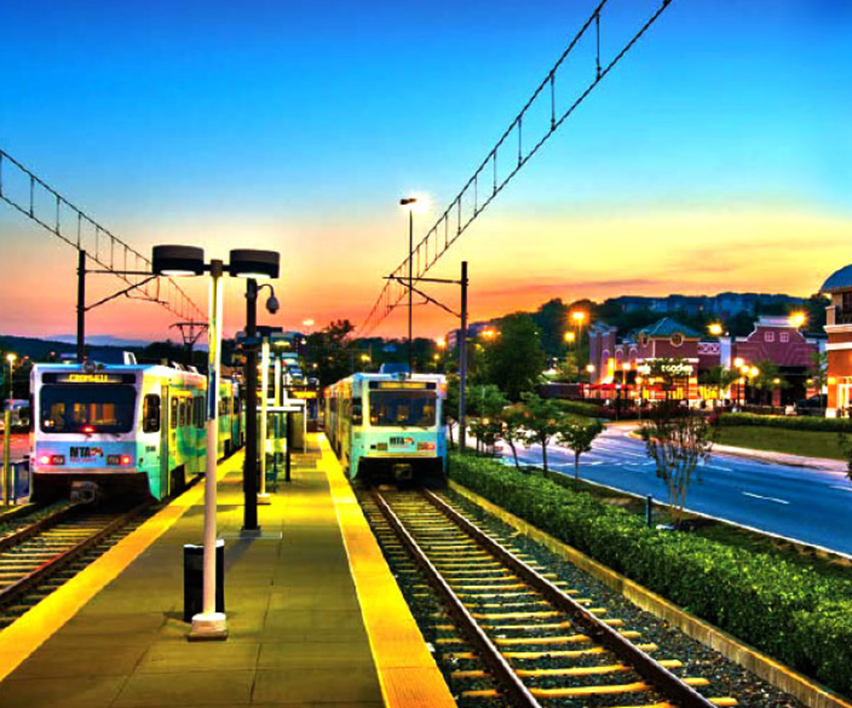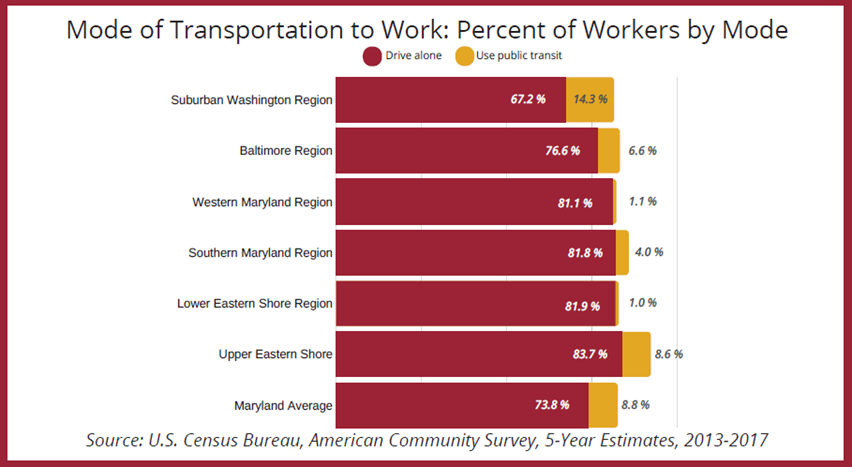Addressing Maryland's Transportation, Infrastructure and Technology Challenges and Opportunities
Page Content
Exploring all aspects of Maryland’s infrastructure future to determine trends, needs and alternatives
to ensure a thriving economy and sustainable future for all communities.
Maryland’s state agencies are planning for the infrastructure and technology needs of the 21st
century and beyond. Governor Hogan’s Taskforce for Rural Broadband is completing vital highspeed
internet access across rural Maryland. The recently approved Maryland Transportation Plan
(MTP) lays out the state’s 20-year mission, and the Maryland Vehicle Administration (MVA) and our
ARC reps are both working on making autonomous technology a reality in Maryland. The availability
of infrastructure is an important question when gauging a project’s viability. A Better Maryland is
complementary to the MTP and also overlaps with the strategies for existing communities, which
emphasize leveraging incentives to overcome local infrastructure obstacles.


The Strategies
IT 1: Ensure a safe, secure and resilient transportation system.
Timeline
2020
Years 0-2
Years 2-4
Years 4-6
2026
IT 2: Provide state infrastructure assistance programs for economic development projects at
different scales.
Timeline
2020
Years 0-2
Years 2-4
Years 4-6
2026
IT 3: Maintain a high standard and modernize Maryland’s multimodal transportation system.
Timeline
2020
Years 0-2
Years 2-4
Years 4-6
2026
IT 4: Track and forecast emerging technologies and strategies that will impact statewide
infrastructure planning, and provide a platform for a coordinated statewide response.
Timeline
2020
Years 0-2
Years 2-4
Years 4-6
2026
IT 5: Promote development opportunities that leverage transportation investments.
Timeline
2020
Years 0-2
Years 2-4
Years 4-6
2026
IT 6: Provide technical assistance to ensure local land use decision making leverages infrastructure
investments and supports transportation choice. (e.g., transit-oriented development, etc.)
Timeline
2020
Years 0-2
Years 2-4
Years 4-6
2026
IT 7: Provide guidance to jurisdictions on land use and development impacts of autonomous
vehicles using new tools and technologies to facilitate multimodal planning, policy, and
project-level decision making at the state, regional and local levels.
Timeline
2020
Years 0-2
Years 2-4
Years 4-6
2026
IT 8: Work in partnership with local jurisdictions and other state agencies to encourage efficient
use of infrastructure through corridor planning, and support revitalization strategies to
strengthen existing communities and infrastructure.
Timeline
2020
Years 0-2
Years 2-4
Years 4-6
2026
IT 9: Work collaboratively with local jurisdictions, metropolitan planning organizations, and state
agencies, to improve coordination and effectiveness across the state’s different transit
systems.
Timeline
2020
Years 0-2
Years 2-4
Years 4-6
2026
IT 10: Explore funding sources and opportunities for state and local critical infrastructure to
strengthen communities and enhance economic development potential.
Timeline
2020
Years 0-2
Years 2-4
Years 4-6
2026
Center_Content
